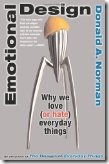I have been trying to mix up my non-fiction reading with some business type books to go along with my technology reading list. The first business book I read this year was The Back of the Napkin by Dan Roam. This book describes the use of simple pictures as a mechanism for demonstrating and solving complex business problems.
The concept was interesting and compelling but I have never been an artist. Of course, Dan had anticipated this type of response and addresses it in the first chapter. Dan categorizes people into three categories he refers to as pens.
Black pen people are eager to pick up a pen and start drawing. Yellow pen people are reluctant to draw but generally add good feedback on pictures that have been drawn. Red pen people are very reluctant to draw at all but generally add insightful dialog to pictures. There is a test to determine what type of “pen” you are. I ended up being in between yellow and red.
If you want to get a really concise summary of what the book is all about start with chapter sixteen. It gives a quick back of the napkin presentation on just what visual thinking is and how it helps get your point across.
Dan breaks down the visual thinking process into four parts; look, see, imagine and show. Looking is simply taking in the entire scene get a general impression of what your eyes are showing you. This is closely followed by seeing where we start to focus in on a particular part of what we have looked at. Next we imagine what could happen based on the things we have seen. Finally we want to show what we have seen and imagined to someone else. This process is summed up nicely in Dan’s example ( chapter 3 page 35 ).
This process shouldn’t come as a surprise. After all, we go through these steps thousands of times a day—like when we cross the street, for example. We look both ways and if we see a car nearby, we stop. If we see a car at a distance, we imagine weather we can make it across before it arrives, and if so, we show our decision by confidently striding across the street or waiting until the car has safely passed by.
The look and see phases of this process are very interdependent, in fact, they can form a loop where we go back to looking at the whole picture after we have focused (seen) on a particular piece. This can be followed by focusing on another aspect of the whole.
For the imagine phase Dan developed a series of questions to ask about the problem in order to decide how to present it. To make it easier to remember he came up with the mnemonic SQVID.
- S for Simple vs. Complex
- Q for Quality vs. Quantity
- V for Vision vs. Execution
- I for Individual Attributes vs. Comparison
- D for Change ( Δ ) vs. Status Quo
Once we have asked the imagination questions it is time for us to show our idea. To do this we have to answer the time honored questions of Who, What, When, Where, How and the all important Why. Dan once again gives us visual answers for these questions.
- Who/What – Portraits
- How Much – Charts and Graphs
- Where – Maps
- When – Timeline or Gantt Chart
- How – Flowchart
- Why – Multivariable Plot
As you can imagine, even without a picture, the book goes much more in depth on each of these points. In fact there are plenty of pictures to back up the points on visual thinking.
The bottom line: I found this book easy to read and I enjoyed Dan’s casual writing style. The points he made are backed up with many examples and a bit of science, not to mention that they just make a lot of sense. If you are looking for a way to deliver more impact with your message you could benefit from the techniques in this book.




